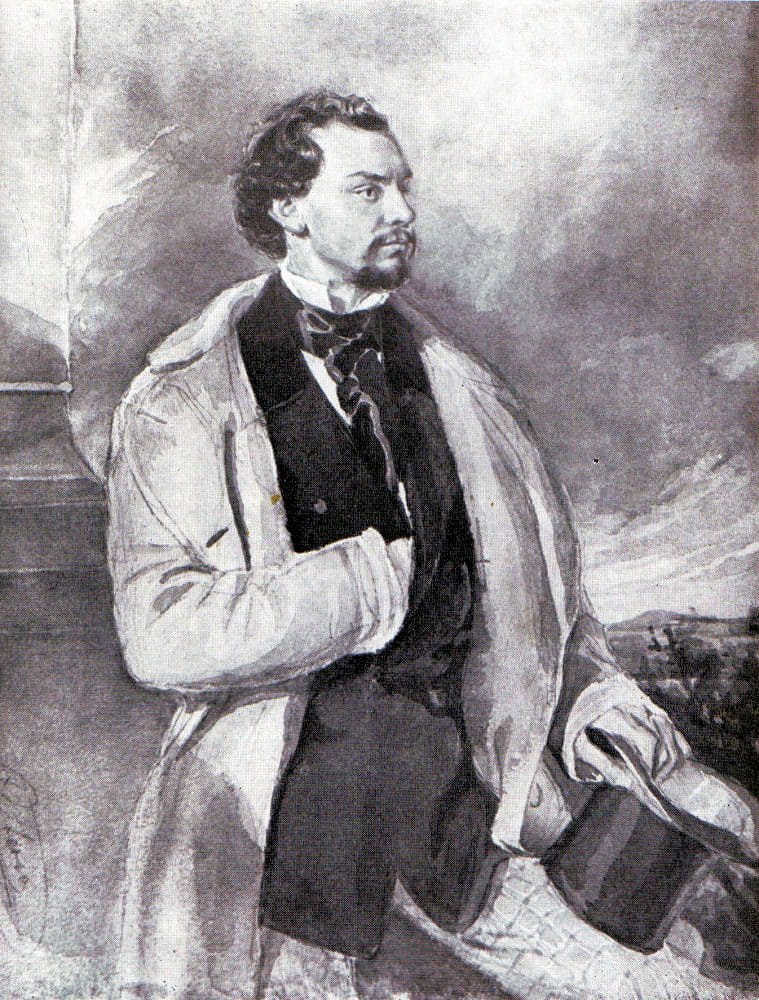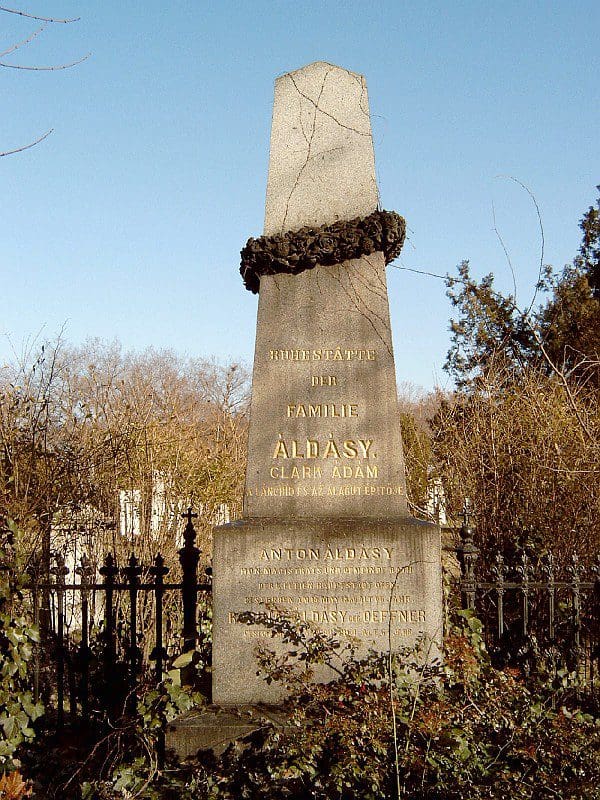Perhaps few people who pass through Clark Ádám Square in Budapest know that the person whose name it bears was originally no Hungarian.[1] Adam Clark was born in Edinburgh in 1811 to a Scottish family of workers. He left his home as a young man, was educated in London, and got to know István Széchenyi, the great Hungarian nobleman dedicated to modernising Hungary and Pest at the machine factory where he was working as an engineer.
Széchenyi needed machinery to make the Danube more navigable and he entrusted the young Scotsman with the installation of river dredging equipment and the management of the work. Clark’s dredger machine called ‘Otter’ (Vidra) was used to deepen the Danube riverbed, making it suitable for larger vessels.
In 1835, Clark was appointed chief engineer for the construction of the Budapest Chain Bridge, the first bridge across the Danube river, financed by Széchenyi.
The work took seven years to complete and the bridge was opened on 20 November 1849.
Clark is remembered as a serious, quiet young engineer who travelled the forests of Austria and Slovakia searching for building timber, selecting the best trees. Under his guidance, 200 million tonnes of stone was mined by British workers in Sóskút, Vác and Mauthausen.

Clark became the subject of ad hominem attacks by several newspapers, and Széchenyi himself came to his defence. The article he penned was entitled ‘A Small Gossip from the Capital’. Thus wrote the ‘Greatest Hungarian’: ‘The rumour is in Budapest that Adam Clark, supervisor of the building of the bridge, took his salary of 600 thousand forints and left town, seeing the dire state of the bridge. But now he is back, and it turns out he was only inspecting quarries…’
It should be noted that Clark was also involved in the building of the tunnel under the Buda Castle, and was also a board member of the company building the first Hungarian steamer ship. Other projects that Clark supervised include the construction of the mental health institute of Lipótmező and the roofs of the Dohány street synagogue.
After the crushing of the 1848–49 Revolution and War of Independence Széchenyi retired from public life, and so did Clark, took the same course, but before that, he had an important role to play in the saving of the Chain Bridge. When he learned that the Austrians were planning to blow up the bridge, he had the gates connecting the chain chambers of the Chain Bridge and the Danube opened and the pumps smashed so that the water could not be pumped out, making sure mines could not be placed there. Unable to access the chambers, the Austrians had powder kegs loaded onto the bridge itself. However, the detonation did little damage to the bridge.
Clark married a Hungarian woman, Mária Irma Áldásy in November 1885.
His command of the Hungarian language was supposedly so good that he ghostwrote some technical texts for Széchenyi.
He also visited Széchenyi during his final years at the mental asylum in Döbling.
Adam Clark passed away on 23 June 1866. The assimilated Scotsman had been suffering from what was known at the time as the morbus hungaricus, or ‘Hungarian disease’, that is, tuberculosis. He was laid to rest in the Áldásy family plot in the Fiumei Road Cemetery according to the rites of the Lutheran Church. His coffin was covered with the British flag.

[1] This article summarises the research of various historians, and is based on the following sources: Elemérné Farkas, ‘Clark Ádám’, Budapest, 3/1966 and Népújság, 5 Oct. 1986.






